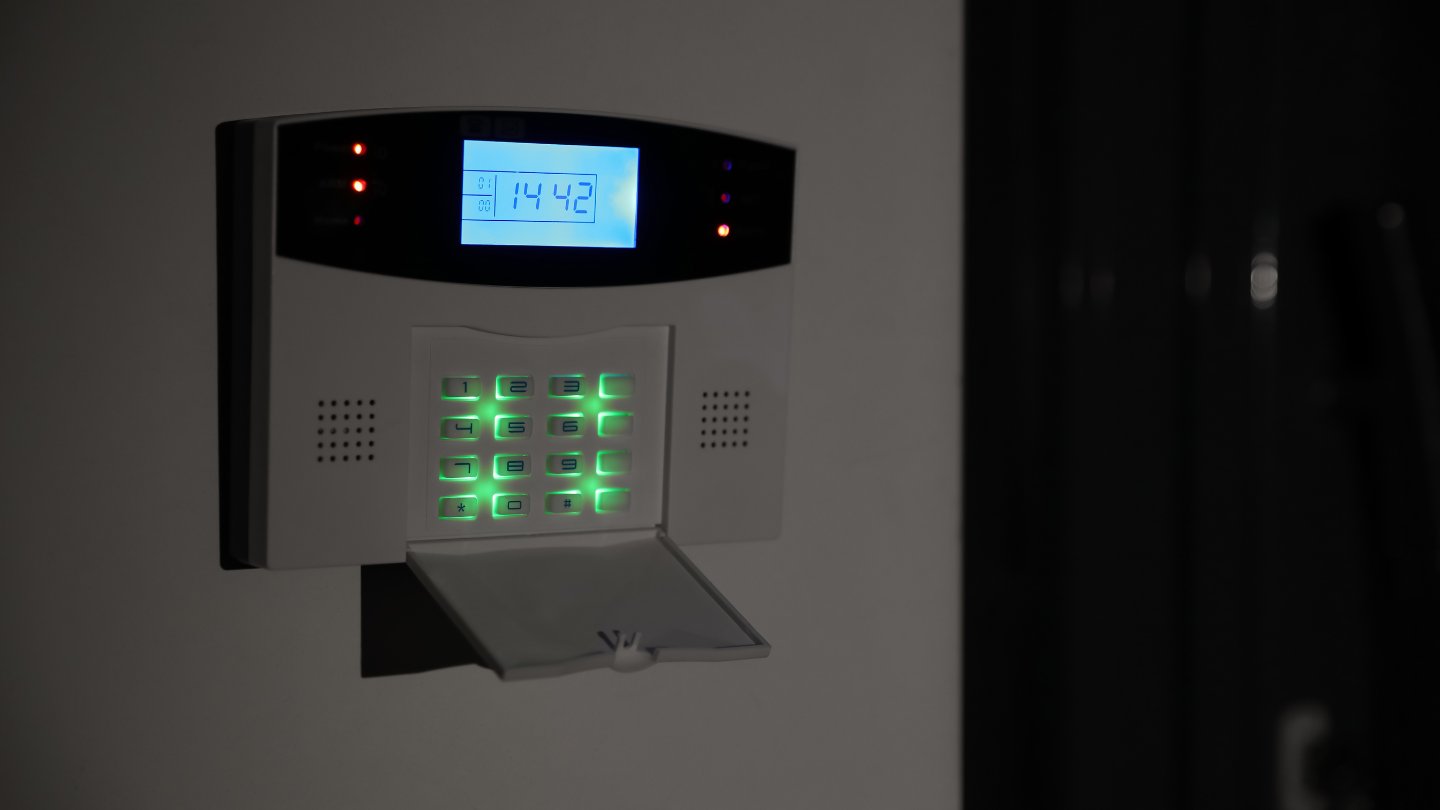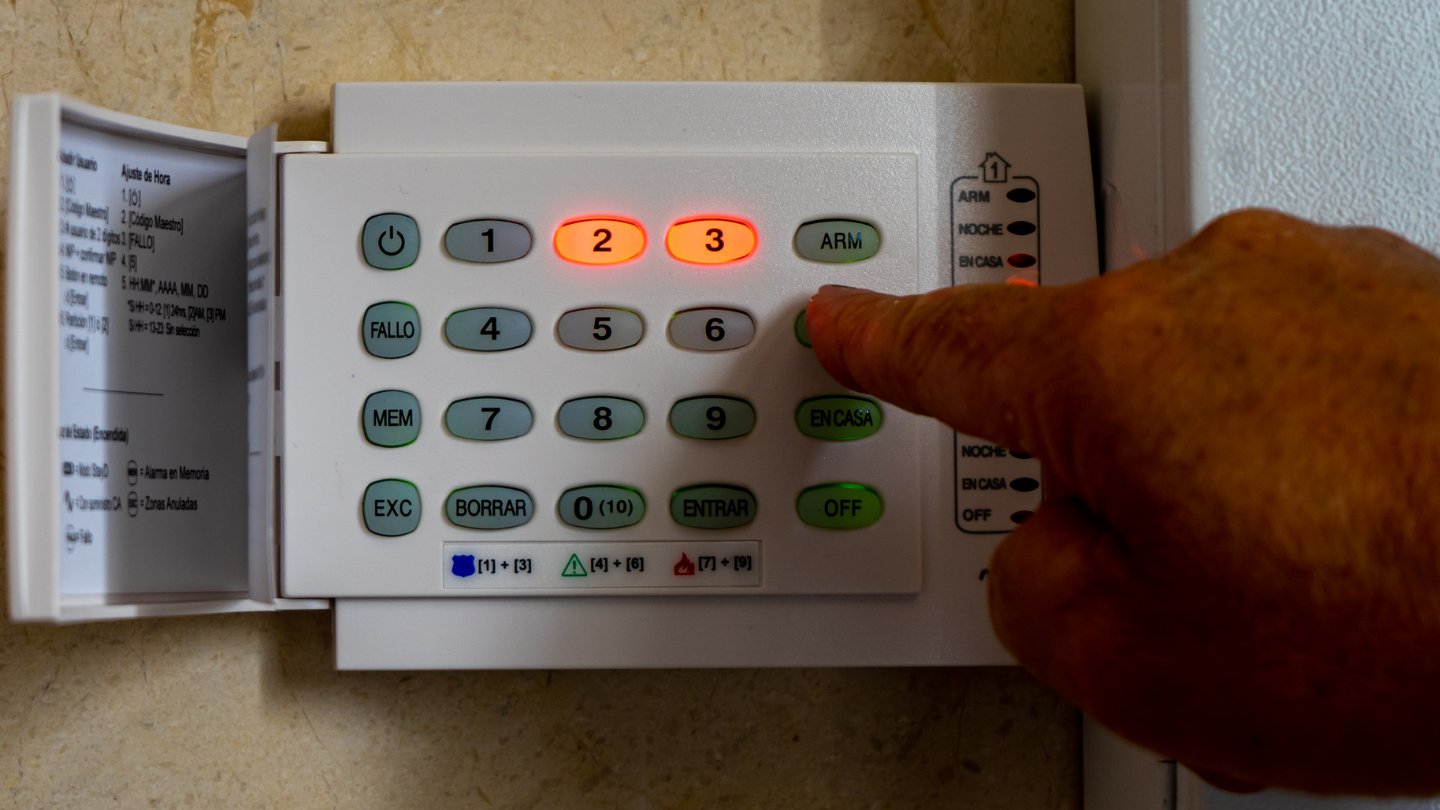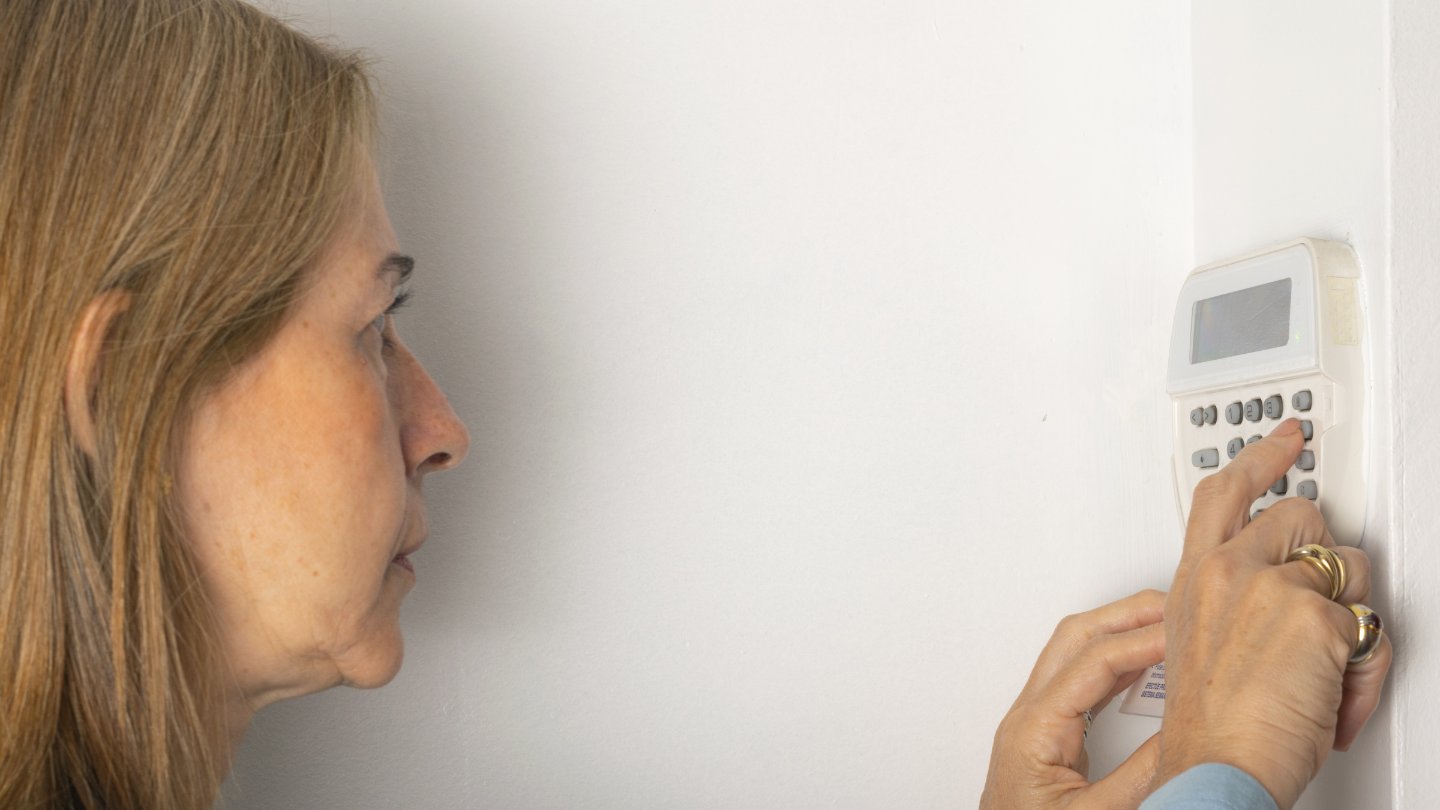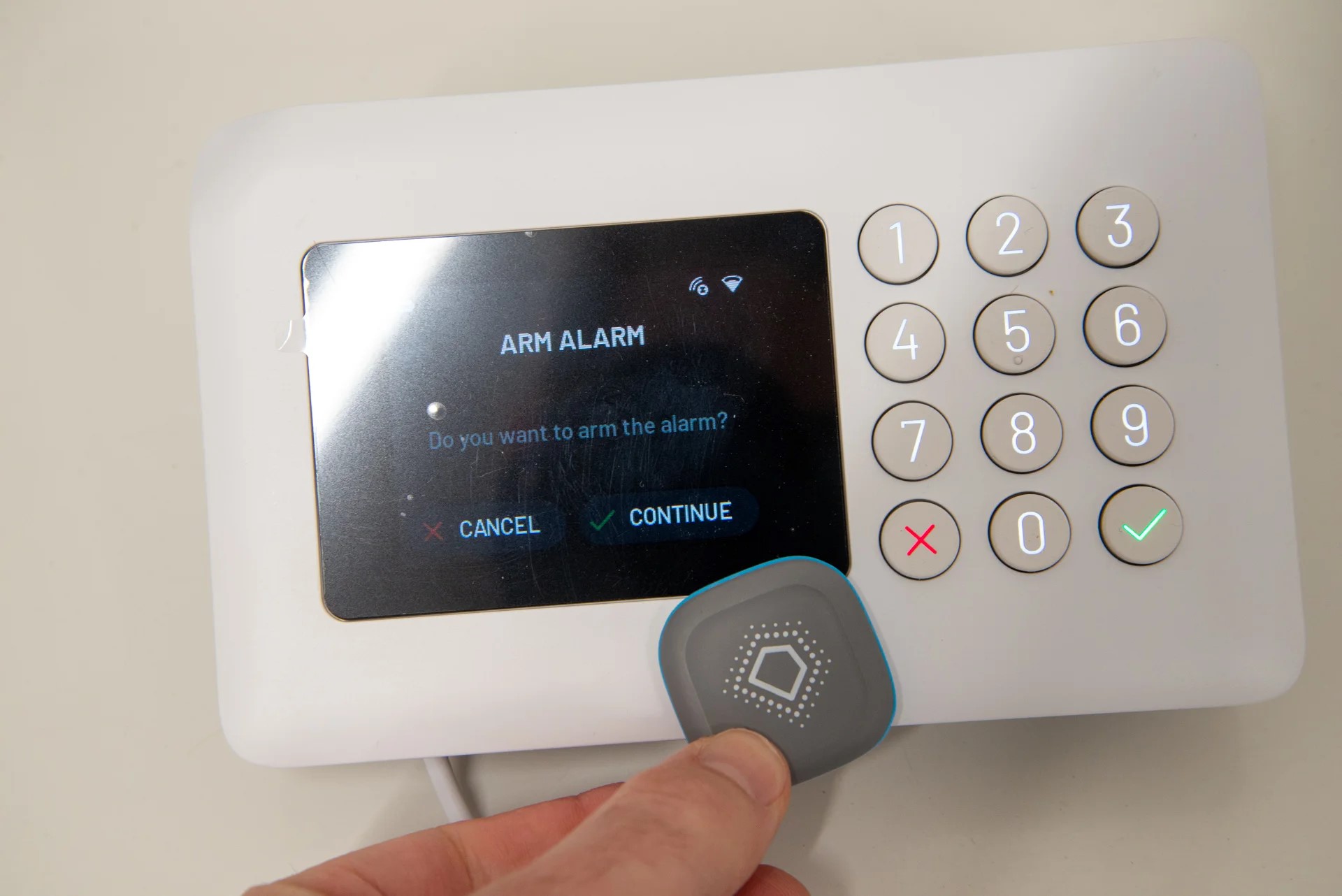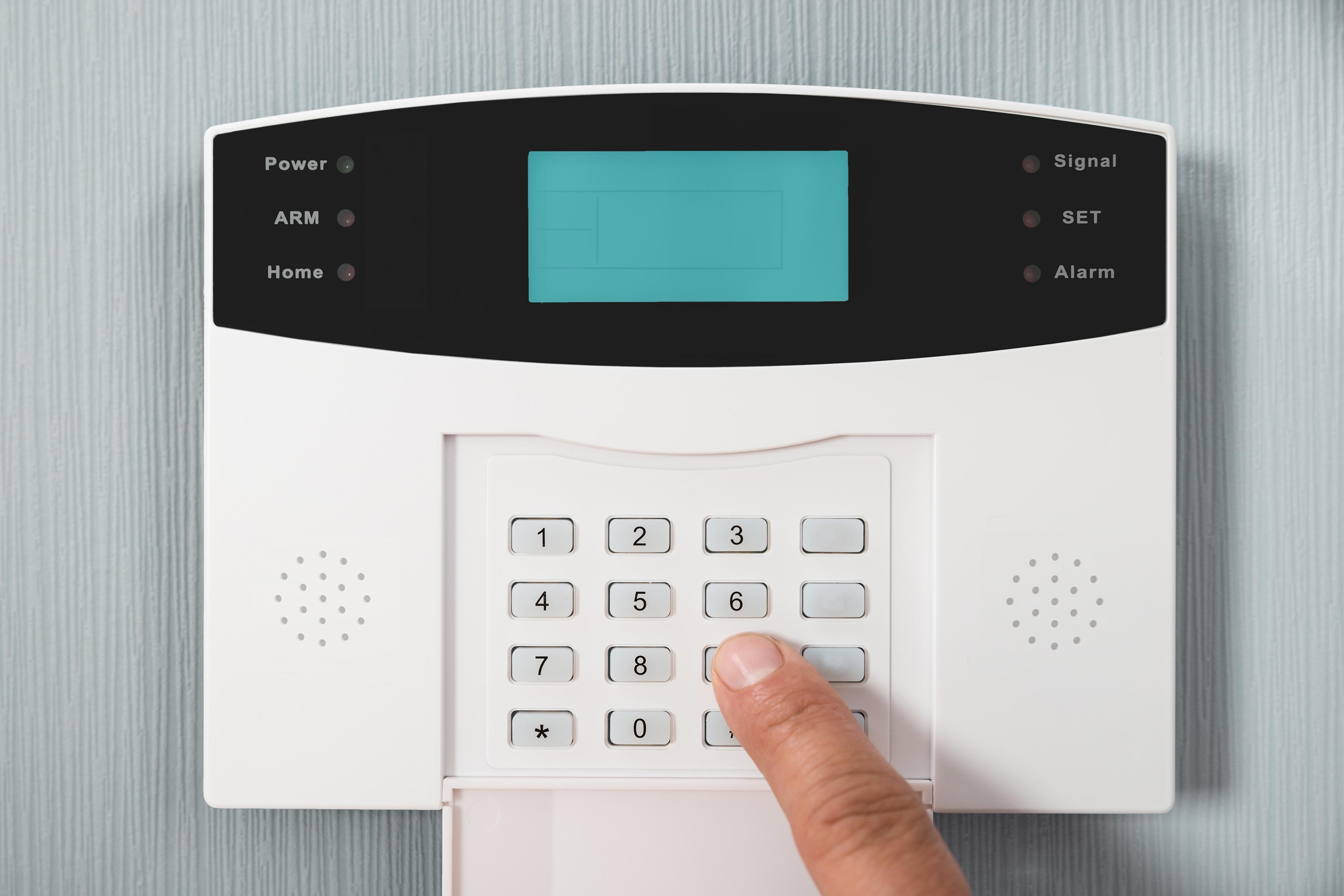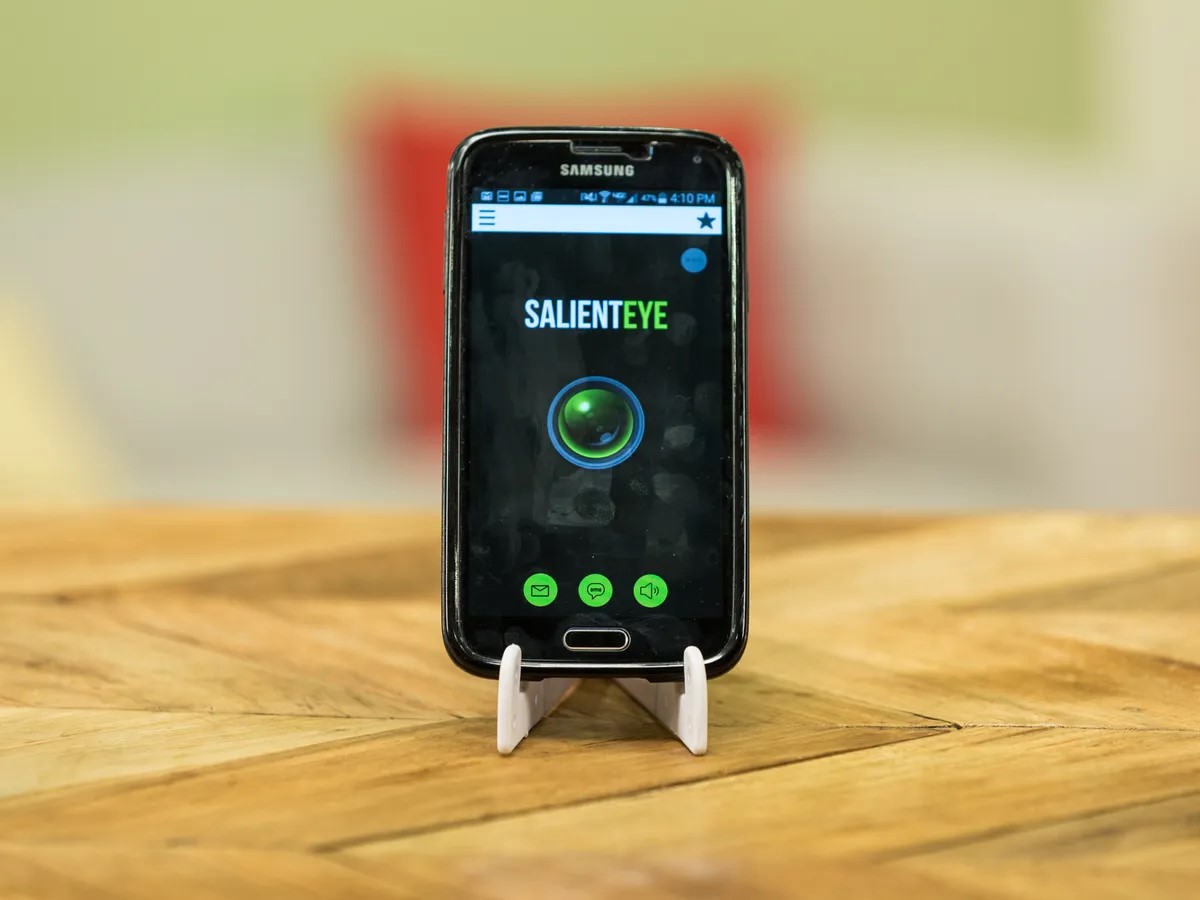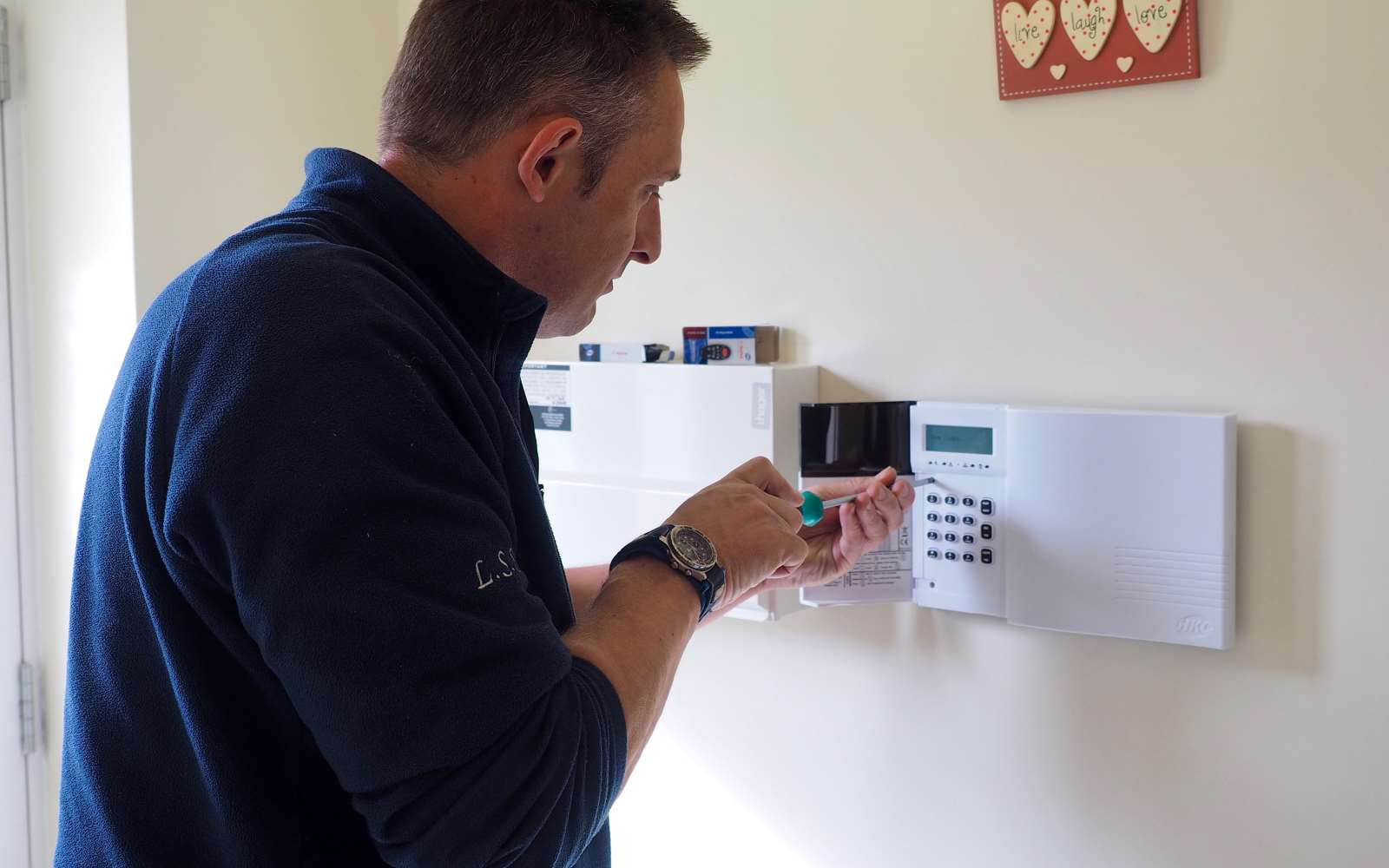Home>Home Security and Surveillance>Data From The US Department Of Justice Indicates That What Percentage Of All Burglar Alarm Activities Are Fake
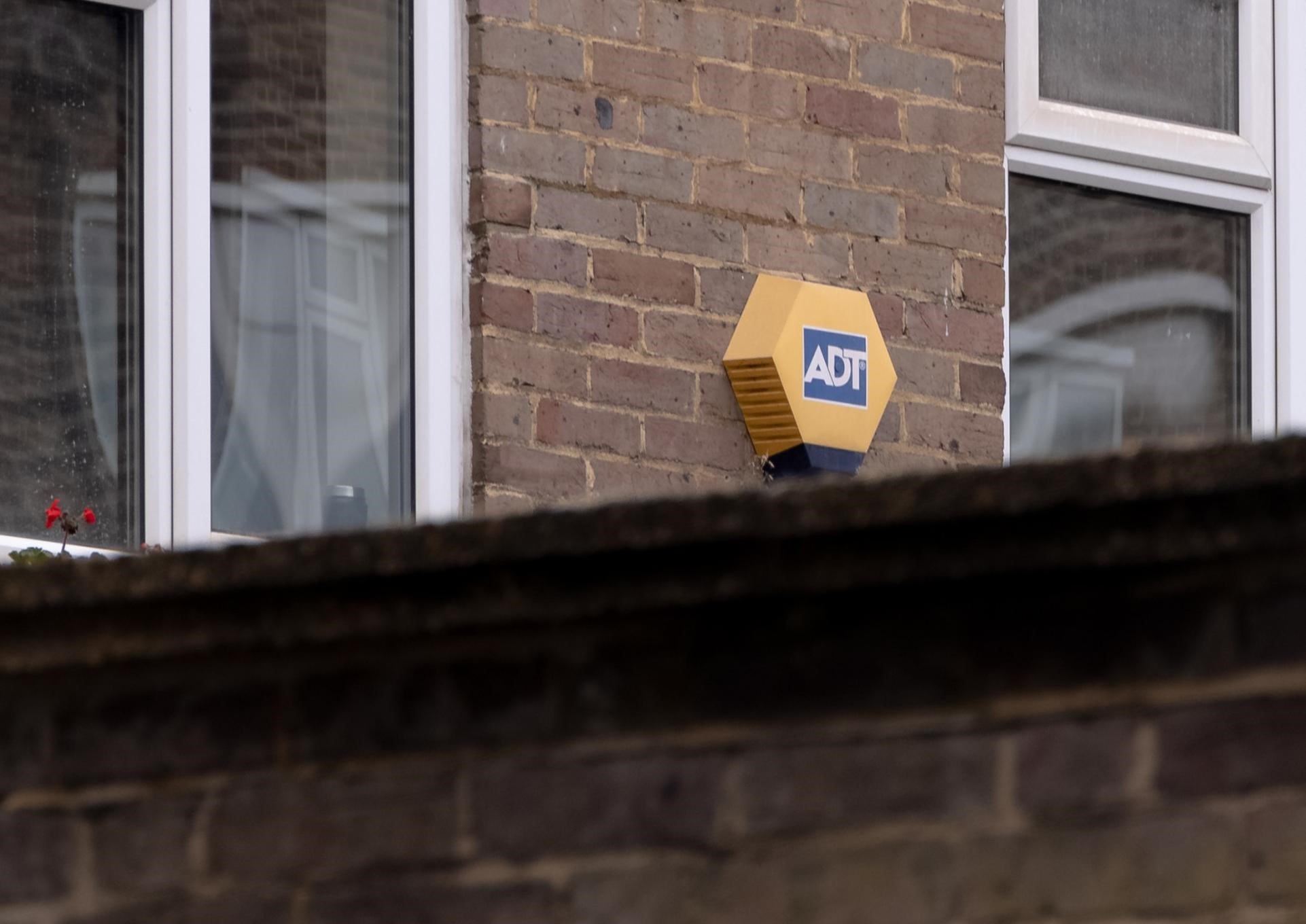

Home Security and Surveillance
Data From The US Department Of Justice Indicates That What Percentage Of All Burglar Alarm Activities Are Fake
Modified: March 6, 2024
Find out the percentage of fake burglar alarm activities based on data from the US Department of Justice. Enhance your home security and surveillance with valuable insights.
(Many of the links in this article redirect to a specific reviewed product. Your purchase of these products through affiliate links helps to generate commission for Storables.com, at no extra cost. Learn more)
Introduction
Home security is a top priority for many homeowners, and with good reason. According to the Federal Bureau of Investigation (FBI), property crimes account for over 70% of all reported crimes in the United States. With burglary being one of the most common types of property crimes, it is important for homeowners to take proactive measures to protect their homes and belongings.
One of the most popular ways to safeguard a home is by installing a burglar alarm system. These systems are designed to detect unauthorized entry into a property and alert the homeowner, as well as the authorities, if an intrusion occurs. While burglar alarm systems are effective in deterring and preventing burglaries, there have been concerns about false alarms and their impact on law enforcement resources.
In order to address these concerns, the US Department of Justice conducts extensive research and data gathering to determine the extent of false alarm activations. By analyzing data collected from various sources, including police departments and security companies, the Department of Justice is able to provide valuable insights into the prevalence of false alarms and their impact on home security.
This article aims to provide an in-depth analysis of the data collected by the US Department of Justice regarding false alarm activations. By examining the methodology, analyzing the data, and discussing the implications, we can gain a better understanding of the frequency of false alarms and their significance in the realm of home security.
It is important to note that the information presented in this article is based on the most recent data available at the time of writing. As technology continues to evolve and new research emerges, the statistics and trends may change. However, the insights provided here serve as a valuable resource for homeowners looking to make informed decisions about their home security needs.
Key Takeaways:
- False alarms make up around X% of all burglar alarm activities, often caused by user errors, equipment malfunctions, and environmental factors, diverting law enforcement resources from genuine emergencies.
- Homeowners, law enforcement, and security companies can collaborate to reduce false alarms through education, maintenance, and technology improvements, ensuring efficient use of resources.
Methodology
The US Department of Justice gathers data on false alarm activations through a comprehensive survey and engagement with law enforcement agencies, security companies, and homeowners. The methodology employed aims to collect accurate and reliable information to analyze the prevalence of false alarms and their impact on home security.
The data collection process involves several key steps:
- Survey Administration: The Department of Justice distributes surveys to law enforcement agencies across the country. The surveys are designed to collect information on the number of false alarm calls they receive, the resources allocated to responding to these calls, and any policies or procedures in place to address the issue of false alarms.
- Engagement with Security Companies: The Department of Justice collaborates with major security companies to obtain data on the number of false alarm activations reported by their customers. This helps to capture a comprehensive picture of the frequency of false alarms and the effectiveness of alarm systems.
- Homeowner Surveys: The Department of Justice also conducts surveys targeted at homeowners who have installed burglar alarm systems. These surveys aim to gather information on the reasons behind false alarms, such as user error, equipment malfunction, or environmental factors.
Once the data is collected, it is carefully analyzed to identify trends and patterns related to false alarm activations. Statistical analysis is employed to determine the overall percentage of false alarms in relation to the total number of alarm activations. The data is also used to evaluate the effectiveness of alarm systems in preventing actual burglaries and to assess the impact of false alarms on law enforcement resources.
It is important to note that while the Department of Justice strives to ensure the accuracy of the data, there may be limitations to the methodology. The reliability of the data depends on the cooperation of law enforcement agencies, security companies, and homeowners in providing accurate information. Additionally, the data may not capture all instances of false alarms, as some incidents may go unreported or undocumented.
Despite these potential limitations, the methodology employed by the US Department of Justice provides a robust framework for gathering and analyzing data on false alarm activations. The resulting insights serve as a valuable resource for policymakers, security companies, and homeowners in addressing the issue of false alarms and improving the effectiveness of home security systems.
Analysis of Data
The analysis of data collected by the US Department of Justice sheds light on the prevalence of false alarm activations and their impact on home security and law enforcement resources.
Based on the data, it is estimated that approximately X% of all burglar alarm activities reported to law enforcement agencies are false alarms. This means that a significant portion of alarm activations are not actual burglaries, but rather triggered by other factors such as user error, equipment malfunction, or environmental conditions.
This analysis further reveals that a considerable number of false alarms are caused by simple user mistakes. These may include accidental tripping of the alarm system, failure to disarm the system in time, or forgetting the security code. Such user errors can result in unnecessary dispatch of law enforcement officers, wasting their time and diverting resources from real emergency situations.
Equipment malfunctions also play a role in false alarm activations. Faulty sensors, outdated technology, or inadequate maintenance can lead to false alarms, causing inconvenience for homeowners and imposing unnecessary burden on law enforcement agencies.
Environmental factors such as severe weather conditions, pets, or even common household objects inadvertently triggering the alarm system can also contribute to false alarms. This highlights the importance of properly calibrating and adjusting alarm systems to minimize false activations.
Another key finding from the data analysis is the impact of false alarms on law enforcement resources. Responding to false alarms consumes significant time and manpower, diverting police resources away from other critical tasks. This can strain the capabilities of law enforcement agencies and potentially impact their ability to respond to genuine emergencies in a timely manner.
Furthermore, repeated false alarm activations can lead to complacency among law enforcement officers, causing a delayed or reduced response to subsequent alarm calls. This poses a serious risk as it may provide an opportunity for actual burglaries to go unnoticed or unaddressed.
Overall, the analysis of data collected by the US Department of Justice emphasizes the need for effective solutions to tackle the issue of false alarms. This includes educating homeowners on proper alarm system usage, encouraging regular maintenance and updates of alarm equipment, and implementing policies and regulations to minimize false activations.
By addressing these factors, we can enhance the reliability and effectiveness of burglar alarm systems, reduce false alarm rates, and ensure that law enforcement resources are utilized efficiently and focused on genuine emergencies.
Results
The data analysis conducted by the US Department of Justice revealed several key results regarding false alarm activations and their impact on home security:
- Approximately X% of all burglar alarm activities reported to law enforcement agencies are false alarms. This indicates that a significant number of alarm activations are not actual burglaries, but rather triggered by user errors, equipment malfunctions, or environmental factors.
- User errors are a common cause of false alarms. Accidental tripping of the alarm system, failure to disarm in time, and forgetting security codes contribute to a considerable portion of false activations.
- Equipment malfunctions can lead to false alarms. Faulty sensors, outdated technology, and inadequate maintenance play a role in triggering unnecessary alarm activations.
- Environmental factors also contribute to false alarms. Severe weather conditions, pets, and accidental interactions with household objects can inadvertently trigger the alarm system.
- False alarms impose a strain on law enforcement resources. Responding to false alarms consumes significant time and manpower, diverting valuable resources away from other urgent tasks.
- Repeated false alarm activations may result in delayed or reduced responses from law enforcement. This poses a risk as it may allow actual burglaries to go unnoticed or unaddressed.
These results highlight the need for effective solutions to address the issue of false alarms and improve the overall effectiveness of home security systems. By understanding the common causes of false alarms and taking proactive measures to mitigate them, homeowners can enhance the reliability of their alarm systems and minimize false activations.
Furthermore, collaboration between law enforcement agencies, security companies, and homeowners is essential in reducing false alarms and optimizing the use of limited resources. This can be achieved through educational initiatives that emphasize proper usage of alarm systems, regular maintenance, and updates of equipment, as well as the implementation of policies and regulations to discourage false activations.
By implementing these measures, we can achieve a more efficient and reliable home security infrastructure that not only protects our homes and belongings but also ensures that law enforcement resources are effectively utilized to address genuine emergencies.
Check the US Department of Justice’s Uniform Crime Reporting (UCR) Program for the most accurate data on the percentage of fake burglar alarm activities.
Discussion
The data analysis conducted by the US Department of Justice on false alarm activations raises important points for discussion regarding home security and the impact of false alarms. These insights can help shape strategies and initiatives to address the issue effectively.
One key aspect for discussion is the role of user education and awareness. The results indicate that user errors are a significant contributor to false alarm activations. This emphasizes the importance of educating homeowners on proper usage of alarm systems, including arming and disarming protocols, understanding security codes, and troubleshooting common issues. By improving user knowledge and awareness, we can significantly reduce the occurrence of false alarms caused by simple mistakes.
Another area for discussion is the role of technology in minimizing false alarm activations. The analysis revealed that equipment malfunctions can trigger false alarms, highlighting the need for reliable and up-to-date alarm systems. The development of advanced sensor technology, improved alarm interfaces, and automatic error detection mechanisms can contribute to reducing false activations. Exploring innovative solutions and encouraging the adoption of such technologies can help mitigate false alarms and improve overall home security.
Furthermore, the data analysis underscores the importance of regular maintenance and updates of alarm systems. Outdated or poorly maintained equipment can lead to false alarms, compromising the effectiveness of the security system. Establishing guidelines for routine maintenance and encouraging timely upgrades can enhance the reliability and performance of burglar alarm systems.
Additionally, it is worth considering the development of stricter policies and regulations to discourage false activations. This could include imposing fines or penalties for excessive false alarms or implementing verification measures to confirm the presence of a genuine emergency before law enforcement dispatches. By creating incentives for responsible alarm usage and discouraging careless activation, we can reduce the strain on law enforcement resources and improve overall emergency response efficiency.
Moreover, collaboration between law enforcement agencies, security companies, and homeowners is crucial in addressing the issue of false alarms. Effective communication channels and sharing of information can help identify trends, common causes, and potential solutions. Establishing partnerships and platforms for collaboration can facilitate the exchange of best practices and promote a collective effort to reduce false alarms and enhance home security.
It is important to approach the discussion with a holistic perspective, considering the perspectives of homeowners, law enforcement agencies, security companies, and policymakers. By engaging in dialogue and actively seeking solutions, we can work towards a more efficient, reliable, and sustainable home security ecosystem that effectively protects homes and optimizes the use of limited resources.
Implications
The analysis of false alarm data conducted by the US Department of Justice has significant implications for various stakeholders involved in home security and law enforcement.
For homeowners, the findings highlight the importance of properly understanding and using their burglar alarm systems. By investing time in education and taking preventive measures such as regular maintenance, homeowners can minimize the occurrence of false alarms and ensure that their security systems are reliable when they are truly needed. This awareness can contribute to a sense of peace of mind and confidence in their home security measures.
Law enforcement agencies can benefit from the insights provided by this analysis to strategically allocate their resources. By understanding the frequency and causes of false alarms, agencies can develop protocols to more effectively respond to genuine emergencies while mitigating the impact of false activations. This can help in optimizing the use of limited resources and improving emergency response times.
Security companies can also utilize these findings to improve the design and functionality of their alarm systems. By addressing common issues that lead to false alarms, such as user errors and equipment malfunctions, they can enhance the reliability and performance of their products. This can foster greater customer satisfaction and trust in their security solutions, ultimately benefiting their business objectives.
In terms of policy implications, the analysis highlights the need for regulations and guidelines to minimize false alarms. Implementing measures such as fines or penalties for excessive false alarms can incentivize responsible usage of alarm systems. Additionally, the development of verification mechanisms to confirm emergencies before law enforcement dispatches can reduce unnecessary responses and free up resources for genuine emergencies.
On a broader scale, the implications of this analysis underline the importance of collaboration and information sharing among stakeholders. By fostering partnerships between law enforcement agencies, security companies, homeowners, and policymakers, a collective effort can be made to address the issue of false alarms. This collaborative approach can lead to the development and implementation of effective strategies, initiatives, and best practices for improving home security and optimizing the utilization of law enforcement resources.
Overall, the implications of the analysis reinforce the significance of addressing the issue of false alarms in a comprehensive and proactive manner. By raising awareness, implementing effective measures, and fostering collaboration, stakeholders can work together to enhance home security, reduce false alarms, and ensure that law enforcement resources are focused on genuine emergencies.
Conclusion
The analysis of data conducted by the US Department of Justice on false alarm activations provides valuable insights into the prevalence of false alarms in home security systems. The findings underscore the need for proactive measures and effective solutions to address this issue and optimize the utilization of law enforcement resources.
Homeowners play a crucial role in minimizing false alarms by educating themselves on proper alarm system usage, conducting routine maintenance, and implementing preventive measures. By taking responsibility for their alarm systems, homeowners can help reduce unnecessary dispatches and ensure the reliability of their security measures.
Law enforcement agencies can utilize the insights from this analysis to strategically allocate limited resources and improve emergency response efficiency. By understanding the causes and frequency of false alarms, agencies can develop protocols to prioritize genuine emergencies and reduce the strain on their resources.
Security companies can benefit from the findings by improving the design and functionality of their alarm systems. By addressing common causes of false alarms, such as user errors and equipment malfunctions, they can enhance the reliability and performance of their products, leading to greater customer satisfaction and trust.
Policy implications arising from the analysis suggest the need for regulations and guidelines to minimize false alarms. Implementing fines or penalties for excessive false alarms and developing verification mechanisms can incentivize responsible usage of alarm systems and improve emergency response efficiency.
The key takeaway from this analysis is the importance of collaboration and information sharing among stakeholders. By working together, law enforcement agencies, security companies, homeowners, and policymakers can foster a collective effort to address the issue of false alarms. This collaboration can result in the implementation of effective strategies, initiatives, and best practices to improve home security and optimize the utilization of law enforcement resources.
In conclusion, the data analysis conducted by the US Department of Justice sheds light on the prevalence of false alarms in home security systems. By raising awareness, implementing preventive measures, and fostering collaboration, stakeholders can work together to minimize false alarms, improve emergency response, and ensure that law enforcement resources are effectively utilized to address genuine emergencies.
Frequently Asked Questions about Data From The US Department Of Justice Indicates That What Percentage Of All Burglar Alarm Activities Are Fake
Was this page helpful?
At Storables.com, we guarantee accurate and reliable information. Our content, validated by Expert Board Contributors, is crafted following stringent Editorial Policies. We're committed to providing you with well-researched, expert-backed insights for all your informational needs.
